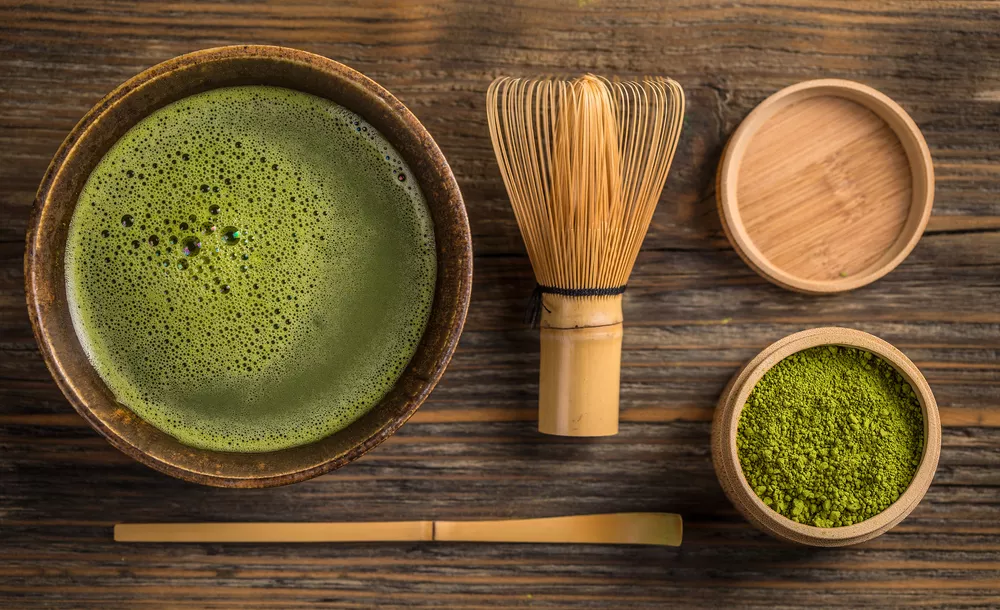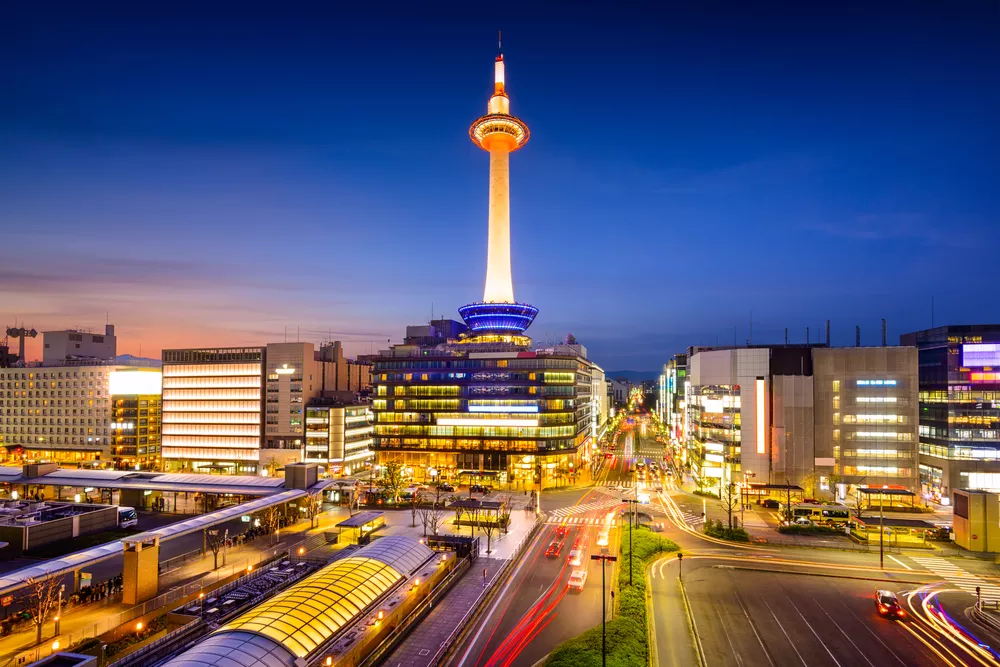Kyoto is home to many of Japan’s most important historic and cultural landmarks. It is a must-visit for anyone that is interested in getting a glimpse of the country’s long and rich past and is accessible using the Japan Rail Pass. For first-time visitors to Kyoto, choosing what to do and where to go can be overwhelming. With so many options available, where do you even begin? Is it a must to see every single temple and shrine in the city? Which attractions should you put at the top of your list? The guide below will help to get you started.
Activities to Do
Hike up the Fushimi Inari Shrine:
Made up of about ten thousand torii gates that starts from the base of and leads to the summit of Mount Inari, the Fushimi Inari Shrine is an iconic attraction in Kyoto. Established in the early 8th century, it takes two to three hours to complete the climb up and down. If you decide to check it out, do it early in the morning or at night to have the amazing scenery all to yourself. Remember to wear good shoes and bring water.

See the Ginkakuji Temple:
Also known as the Silver Pavilion, the Ginkakuji Temple is a 15th century Zen temple in eastern Kyoto. In addition to the main temple, its complex is composed of several other buildings, a dry sand garden, and a moss garden that you can see up close by following a pleasant walking trail.
Walk the Philosopher’s Path:
Measuring about two kilometers in length, the Philosopher’s path is a scenic, tranquil pathway that starts around the Ginkakuji Temple neighborhood and ends around Nanzenji Temple. It follows a canal that is lined with many restaurants and shops, as well as cherry trees that are breathtaking during the spring season when the sakura are in full bloom.
Visit the Kiyomizudera Temple:
Situated in eastern Kyoto, the Kiyomizudera Temple is an 8th century Buddhist temple known for its main hall with a veranda, propped up by large pillars, and offers pleasant views of the hillside and the city. It is best to visit it as soon as it opens to beat the crowds.
Stroll around Gion:
Kyoto’s Gion district has an abundance of traditional restaurants and tea houses that serve authentic local dishes while enjoying a song and dance performance by geisha and maiko. Its streets have that old Japan feel, with all the narrow alleys lined by wooden buildings.

Check out the Kinkakuji Temple:
Also known as the Golden Pavilion, the Kinkakuji Temple is a 14th century Zen temple covered with pure gold leaf. It has a garden that features a pond with some islets, bridges, and a wide array of plants and flowers.
Spend a day in Arashiyama:
Situated in the outskirts of Kyoto, Arashiyama is a district home to old, historic sites, and incredible natural scenery. Some of its most notable landmarks are the Togetsukyo Bridge, which is an 8th century wooden bridge with great views of the river and the mountains; the Monkey Park Iwatayama, which is home to more than 170 Japanese macaque monkeys; the Bamboo Forest, which affords a nice stroll and photo opportunity; and the Tenryuji Temple, which is recognized as one of the five great Zen temples of Kyoto.

Tour Nishiki Market:
A vibrant market in central Kyoto, the Nishiki Market is home to over a hundred restaurants that serve different kinds of seafoods and local specialties, and stores that sell knives, cooking utensils, produce, and other items.
Learn some Japanese history at Nijo Castle:
Constructed in 1603, the Nijo Castle served as the official residence in Kyoto of Tokugawa Ieyasu during his reign as shogun. Nowadays, the castle and the grounds, including the moats, gardens, and stone walls, are open to the public to explore. It is highly recommended to anyone who is interested in Japanese history.
Local Cuisine To Try
Japanese food is some of the best tasting in the world, so while in Kyoto, it is a must to delve into the city’s delicious culinary offers. Below are some examples of foods that you should get a taste of while in Kyoto:
Kaiseki:
Kaiseki is a traditional Japanese meal made up of several courses, and served for dinner. It consists of sakizuke, an appetizer that can be salmon or anything bite-sized; hassun, the second course that is usually sushi; mukozuke, which is a serving of sashimi; takiawase, which is a simmered dish made up of fish, tofu, or meat, and vegetables; futamono, a kind of soup; gohan, a rice dish mixed with various seasonal ingredients; mizumono, which can be ice cream, cake, or other kinds of dessert; and more.
Some highly recommended kaiseki restaurants in Kyoto are the Kyoto Kitcho Arashiyama, Gion Karyo, and Kinobu.
Ramen:
Like everywhere else in Japan, Kyoto has a wealth of ramen places. Kyoto-style ramen is usually prepared using a soy sauce base broth and straight noodles, sometimes mixed with pork oil to enhance the soup flavor.
At Kyoto Station, you can try Kyoto ramen at the Kyoto Ramen Koji, a corridor on the station’s 10th floor lined with affordable ramen restaurants.

Gyoza:
Gyoza are Japanese dumplings shaped like a half moon. Often served as a side dish or an appetizer, they are usually made with vegetables and pork wrapped in thin dough and pan fried. Some varieties are made with beef, chicken, shrimp, lamb, and even fish, and seasoned with sesame oil, pepper, soy sauce, or sake.
Some good gyoza restaurants in Kyoto are Gyoza Hohei and Senmonten.
Tea:
There are many tea houses all over Kyoto where you can try locally made tea. Traditional tea houses in Gion, for instance, serve matcha with some Japanese sweets to enjoy. You can take part in a tea ceremony to learn about the history of this tradition and even make your own green tea. Tea houses like En, Ichiriki Chaya, and Ran Hotei are open to tourists who wish to partake in this experience.
In addition to that, there is a long list of other tea products that you can find there. Try matcha-flavored ice cream, matcha chocolates, matcha biscuits, matcha potato chips, and matcha cake, which you can find at specialty shops and convenience stores.

Green Tea Matcha
Places To Stay
Kyoto has a plethora of accommodation options for all kinds of travelers. Whether you are traveling on a budget or are splurging for this once-in-a-lifetime trip, you will not have a hard time finding a place to stay that suits your preferences.
Budget travelers:
Perfect for backpackers, hostels like the Guesthouse Kyoto Compass and the Guest House Oumi, are centrally located and offer bunk beds in dormitory rooms for under 3,500 yen per night.
Mid-range budget:
For travelers looking for mid-range accommodations, check out the Hotel Sui Kyoto and the Home Inn Toji, which both offer easy access to Kyoto’s top attractions and good value private rooms for 7,000 yen to 10,000 yen per night.
Luxury travel:
For people with a flexible budget and looking to experience the best quality comfort and relaxation while on vacation, the Hotel The Celestine Kyoto and the Hotel Kyuu Kyoto offer stylish rooms and access to their spa and bath houses for the price of 20,000 yen to 50,000 yen per night.

Downtown Kyoto


















